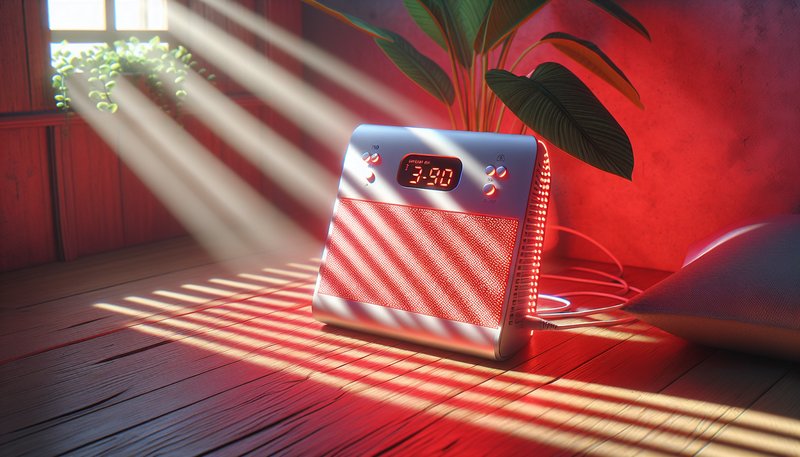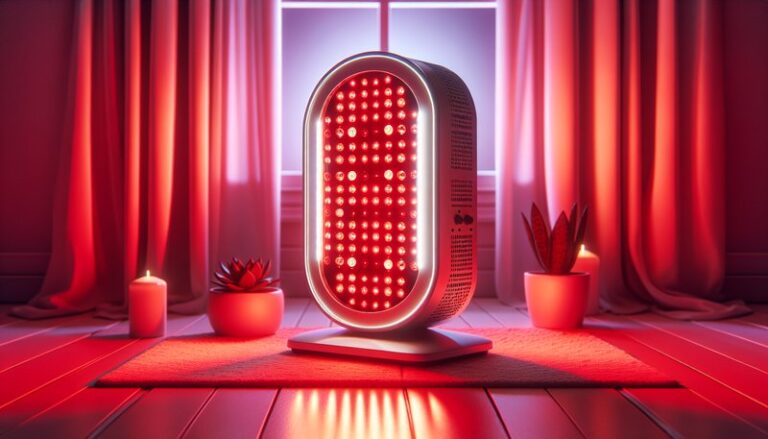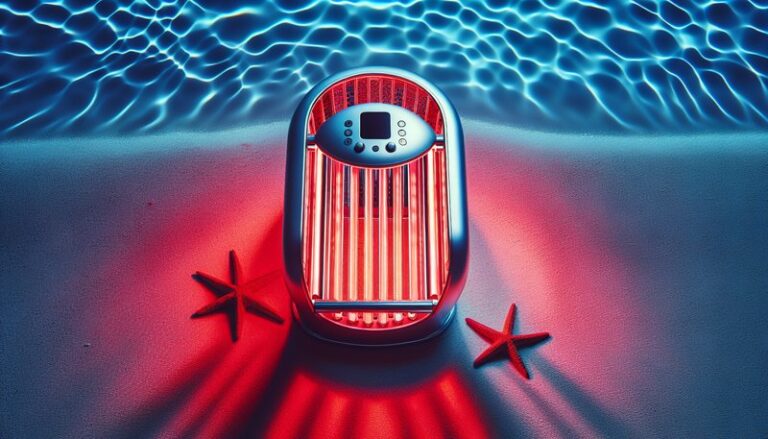What Is Red Light Therapy For Sleep?
Can a simple light help improve your sleep?
This article will delve into the phenomenon of red light therapy and its potential benefits for enhancing sleep quality. We will explore how this innovative treatment works, its advantages, possible alternatives, and common questions surrounding its effectiveness.
Key Takeaways
- Red light therapy uses low-wavelength red light to promote better sleep and relaxation.
- Regular use may help reduce insomnia symptoms and improve overall sleep quality.
- Consideration of personal health conditions and alternatives is essential before starting treatment.
What is Red Light Therapy?
Red light therapy is a treatment that harnesses low-wavelength red light to possibly stimulate cellular function and promote healing within the body. This therapy operates by using specific wavelengths of light (usually between 600 to 650 nanometers) to penetrate the skin and affect the cells beneath it.
The origins of red light therapy can be traced back to the 1960s when it was first used in treating skin conditions and promoting wound healing. Today, it has gained traction for various health issues, particularly for improving sleep quality. It is believed that red light affects the production of melatonin, a hormone that regulates sleep-wake cycles.
What are the Benefits of Red Light Therapy for Sleep?
Red light therapy offers several potential benefits that can significantly impact sleep quality. The following sections will explore specific advantages in detail.
Find out everything in Is Red Light Therapy Effective for Neuropathy?
Enhances Melatonin Production
One of the most prominent benefits of red light therapy is its potential to increase melatonin levels. By mimicking the natural light environment during evening hours, red light can help signal to the body that it is time to prepare for sleep.
Reduces Symptoms of Insomnia
Many users report a decrease in insomnia symptoms after utilizing red light therapy consistently. The calming effects of the light can help with anxiety and restlessness, allowing for a smoother transition to sleep.
Improves Overall Sleep Quality
Several studies have indicated that regular exposure to red light can enhance the overall quality of sleep, leading to deeper and more restorative rest, which in turn supports improved daytime function.
Supports Circadian Rhythm Regulation
Red light therapy may also assist in regulating the circadian rhythm, the natural internal process that controls sleep and wakefulness. Establishing a consistent rhythm can be vital for those struggling with sleep issues.
Promotes Muscle Recovery
For those engaged in regular physical activity, the use of red light therapy can support muscle recovery, potentially leading to less discomfort and a better posture, which aids in a more restful sleep.
Is it Possible to Use Red Light Therapy for Sleep?
Absolutely, using red light therapy for sleep improvement is not only feasible but increasingly popular. Many consumers are incorporating red light therapy devices into their nighttime routines to promote relaxation before bed.
What are the Advantages of Using Red Light Therapy for Sleep?
Utilizing red light therapy before sleep boasts several advantages:
Non-Invasive and Painless
Unlike many sleep medications, red light therapy is a non-invasive and painless option. You can incorporate it into your routine without the concern of any side effects associated with pharmaceuticals.
Convenience of Use
Red light therapy devices are relatively easy to use. They can come in various forms, including lamps and masks, allowing users to easily integrate them into their nightly practices.
Long-Term Benefits
Using red light therapy consistently can lead to long-term sleep benefits as opposed to temporary fixes that might be associated with medications or other interventions.
See the whole article Is Red Light Therapy Effective?
What are the Things to Consider Before Using Red Light Therapy?
Before starting red light therapy, it’s essential to consider a few important factors:
Consultation with a Healthcare Provider
Always consult with a healthcare professional before beginning red light therapy, especially if you have pre-existing medical conditions or concerns regarding your sleep habits.
Device Quality and Specifications
Make sure to choose a quality device that emits the appropriate wavelengths of red light. Not all devices are created equal, and ineffective devices may not provide the desired outcomes.
Timing of Use
Consider the timing when using red light therapy. Experts recommend using it in the evening, approximately 30 to 60 minutes before bedtime, to reap the full benefits for sleep.
What are the Alternatives to Red Light Therapy for Sleep?
If red light therapy does not align with your needs or preferences, there are several effective alternatives for improving sleep:
Cognitive Behavioral Therapy for Insomnia (CBT-I)
CBT-I is a structured program that helps individuals manage insomnia by changing their thoughts and behaviors surrounding sleep. It has proven highly effective and can be a suitable alternative for those who prefer non-light-based therapies.
Melatonin Supplements
Melatonin supplements are widely used to help regulate sleep cycles. They can be convenient for short-term use, especially for those experiencing jet lag or occasional insomnia.
Sleep Hygiene Practices
Improving sleep hygiene, such as creating a relaxing bedtime routine, limiting screen time before bed, and maintaining a dark and cool sleep environment, can significantly enhance overall sleep quality.
Conclusion: Is it Recommended to Use Red Light Therapy for Sleep?
Red light therapy has emerged as a promising option for individuals seeking to improve their sleep quality. With its potential to enhance melatonin production, reduce insomnia symptoms, and support overall well-being, it can be a valuable addition to your sleep routine. However, it is essential to consult with a healthcare provider and consider personal preferences and alternatives before diving in.
Frequently Asked Questions
How long does it take to see results from red light therapy for sleep?
Results can vary depending on the individual and consistency of use, but many may begin to notice improvements in sleep quality within a few weeks of regular sessions.
Are there any side effects associated with red light therapy?
Red light therapy is generally considered safe and non-invasive, with minimal side effects. However, it is always wise to consult a medical professional to determine if it is suitable for your specific situation.
Can I use red light therapy during the day?
While red light therapy can be used at any time, utilizing it in the evening or close to bedtime is optimal for enhancing sleep quality as it aligns more closely with the body’s natural circadian rhythms.
How often should I use red light therapy for sleep?
Most recommendations suggest using red light therapy for about 15 to 30 minutes per session, 3 to 5 times a week, to effectively promote better sleep patterns.
Is red light therapy effective for everyone?
Results can vary among individuals, and while many report positive outcomes, others may experience less noticeable benefits. Each person’s response is unique, so it may be necessary to explore further options if results are not satisfactory.






